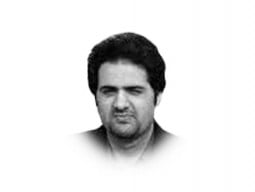A closer look at the allocations and targets suggests that some are overly optimistic. For instance, tax collection is estimated to rise to give a tax-to-GDP ratio of 10.1 per cent for 2012-13. However, given that it currently stands at around nine per cent, and that no appreciable changes have been made in the way taxes are collected in the country, expecting this figure to be realised is perhaps, expecting a bit too much. Furthermore, the finance minister said that the issue of circular debt would be resolved “whatever the cost” and this means that the government may have to spend hundreds of billions more to sort out this mess, thereby increasing the fiscal deficit. In his speech, he didn’t give any specific figure for this so this issue will remain to be one on which the government, and in particular Mr Sheikh, can expect some tough questioning in the coming days and weeks. As for the budget allocations, there is no substantial difference compared to recent years, with defence, debt servicing and the running of the government continuing to take up the bulk of the expenditure. For a country that has a very low literacy level, poor healthcare facilities and which ranks very low on various human development indicators, to spend the bulk of its resources on defence and debt serving is close to calamitous and it is a shame that no effort has been made to change this in any significant way.
As for the Annual Development Plan for 2012-13, the GDP is estimated to grow by 4.3 per cent, up significantly from the 3.7 per cent record for 2011-12. How this will be achieved, given that the state of the economy is not good and no tangible measures have been taken to turn things around, has not been explained — surely the finance minister doesn’t think that hope and good intentions alone will help achieve this? The government will have to make some clear policy changes in certain areas, such as in resolving the chronic energy shortfall, so that the economy’s full operating capacity can be harnessed, and in tackling the issue of militancy and terrorism head on, so that investment and the business climate can both improve.
The budget document for any government is a plan for running/managing the economy for the coming fiscal year, in a way that benefits the greatest number of citizens. Perhaps, the best way to measure this is the change in income per capita along with upward movement in various social indicators. While the former may be rising, albeit gradually, as far as the latter are concerned, Pakistan continues to do poorly, and things will not improve until and unless are exhibited the political will to a) reduce expenditure on debt servicing, b) cut back on the cost of running the government and c) divert resources from making weapons and cruise missiles to building schools, hospitals, colleges, clinics, water and sanitation distribution networks and so on. On that, Pakistan still has a long way to go.
Published in The Express Tribune, June 2nd, 2012.
COMMENTS (1)
Comments are moderated and generally will be posted if they are on-topic and not abusive.
For more information, please see our Comments FAQ












You may not agree, but budgets in Pakistan have little to do with the common man. For him the energy prices have shot up again by Rs. 1.92 per unit (raising it to more or less about Rs. 16 and 17 per unit; and we hear that after the 2012 budget the per unity price will shoot up to the skies), Take for example the price of a pack of cigarettes which disappeared from the vendors as it does predictably every year. The price of one way commuter Van fares went up by Rs. 5; the price of USP short up by Rs. 10,000 in one day; The least price fora white shalwar and Kurta is above Rs. 1000 per year (It was less than Rs. 500 two years ago); women blouses are sellig at Rs. 3500 a piece after lows of fashion parades which were contrived by fabric manufacturers as pretext to raise prices of what they called summer lawns.So, what iss in the budget for the common man. The 20 per cent raise in pays is also misleading because prices will shoot up by at least 50 per cent by year's end. Take the example of shoes. They offer a discount of 70 per cent, but the price after discount is about Rs. 2000; So, can you guess the shoe price discount without the discount.discount? It would be Rs. 7000- as good as what Bally shoes might cost overseas.That's the budget ,